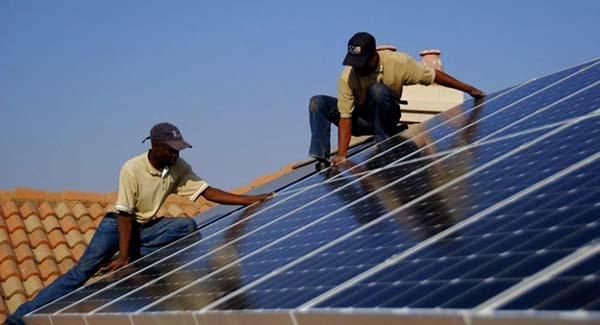Rooftop solar panels are increasingly becoming an option for many households across the United States and other countries. In the U.S. many areas offer attractive Renewable Energy Credits (RECs) that, when coupled with federal and local incentives, can make rooftop solar panels an attractive green energy choice that is good for the environment.
Solar energy in the United States has become very popular over the past decade. Here are some numbers to show the continued growth of solar energy from rooftops. In 2010, 667 megawatt (MW) was installed in homes. By 2020, this had increased by 28 times to over 18,100 MW. At the same time, the cost of residential solar systems has come down to half of what it was, even before government or power company incentives are applied.

Installation of Rooftop Solar Panels
Guidelines for Rooftop Solar Panels
It’s very important to consider your roofs condition before installing any rooftop solar panels. You will want to inspect your roof to find out if you need to do any renovations or not. Older roofs may need to be completely replaced including the roof decking. You will want to replace it before installing solar panels to avoid having to remove and reinstall the panels later. Make your roofing company aware that you will be installing solar panels and ask them if they will come back after they are installed to ensure the panels have not damaged the roof.
The amount of energy produced is impacted by how much sun the panels receive, so trees, other homes, or buildings can impact your ability to maximize solar production. You will also want to consider the direction and pitch of your roof so that your rooftop solar panels get as many hours as possible of good sunlight.
Consider how much solar energy you will need.
When considering rooftop solar panels, it’s important to understand the regulations in your area (be sure to contact your Homeowners Association and find out if they have any guidelines surrounding the installation) and to know your electricity consumption (kWh) and rates.
Net Metering is a utility policy which allows consumers in some areas to receive a credit on their electricity bill by returning any unused solar electricity they generate back to the grid. Some states and service territories are compensating for excess electricity at rates lower than what a customer would typically pay for electricity. To maximize the financial benefits, it is recommended that the system is designed in accordance with your electricity usage to ensure optimal savings over time.
Google Project Sunroof is a tool that can address most of these concerns. This tool uses images from Google Earth and analyzes the roof shape to provide you with a personalized solar plan, while taking local weather patterns into consideration. PVWatts is another tool from the National Renewable Energy Laboratory (NREL), which uses information you provide to help you determine if solar energy is right for you.
Cad Pro is an affordable and easy alternative to other more expensive construction design software. Cad Pro is great for creating kitchen design plans, innovative smart home designs, custom home plans, building plans, office plans, construction details, and much more.
CAD Pro allows your designs of rooftop solar panels to be shared with clients, colleagues or professional roofing contractors using Dropbox®, Google Drive™, OneDrive®, and SharePoint®. Export files to Microsoft Word®, Excel®, and PowerPoint® with a single click.
CAD Pro has helped thousands of homeowners, professional designers, builders, and contractors plan and design all types of solar panel plans. CAD Pro is used by NARI professional remodelers and contractors and the NRCA roofing contractors. CAD Pro is also used by NHBA home builders and contractors, the National Kitchen & Bath Association (NKBA). as well as the (NALP) National Association of Landscape Professionals.
